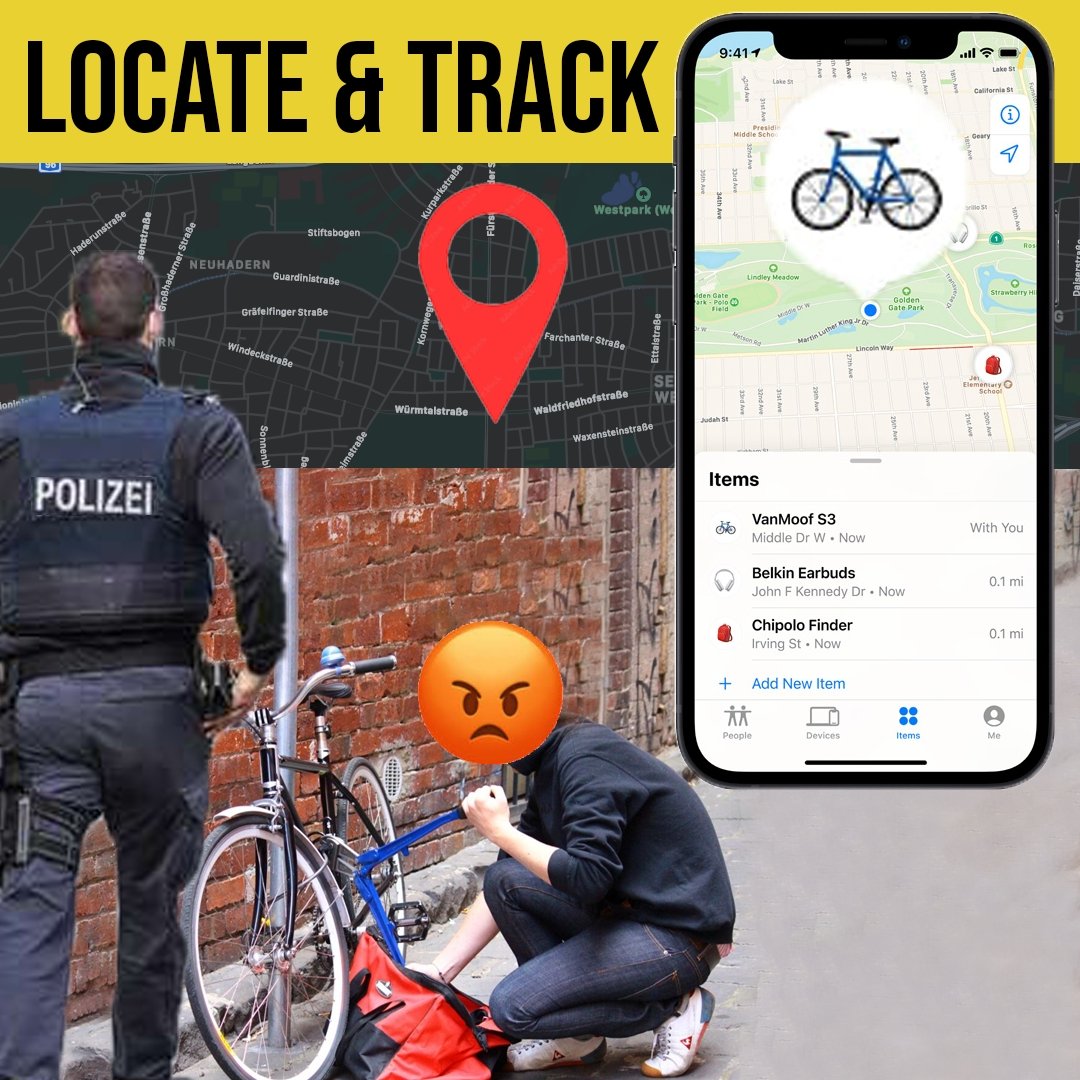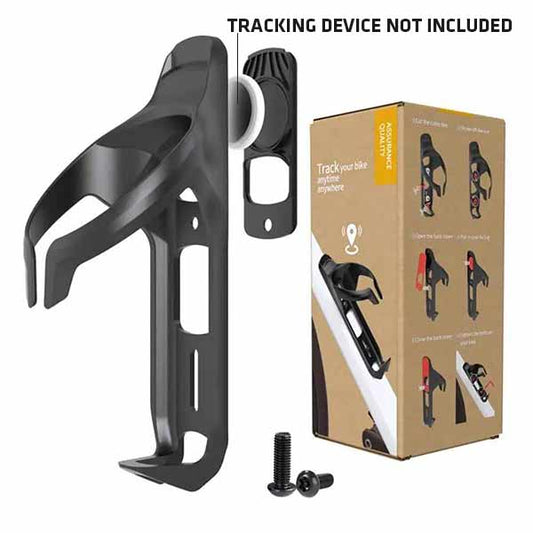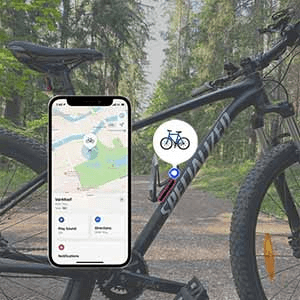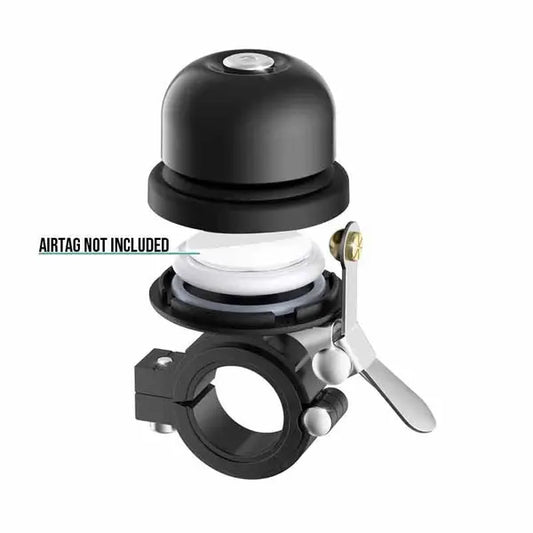How to Lock a Bike Like a Pro (Even Without a U-Lock)
Every 30 seconds, another cyclist becomes a victim of bike theft. This sobering statistic highlights why mastering the art of bike security isn't just helpful—it's essential. While many cyclists believe that purchasing an expensive lock guarantees protection, the truth is that your locking method matters even more than the lock itself. Though U-locks remain popular among urban riders, numerous effective alternatives exist for securing your bicycle in various scenarios, whether you're at home, work, or running errands around town.
Many cyclists now combine strong physical locks with smart technology for complete peace of mind. Alongside proper locking techniques, tools like GPS trackers and AirTags are becoming increasingly important in the battle against bike theft. In fact, combining traditional security with modern tracking has proven remarkably effective in protecting bicycles from theft – the importance of a bike lock and AirTag working together cannot be overstated.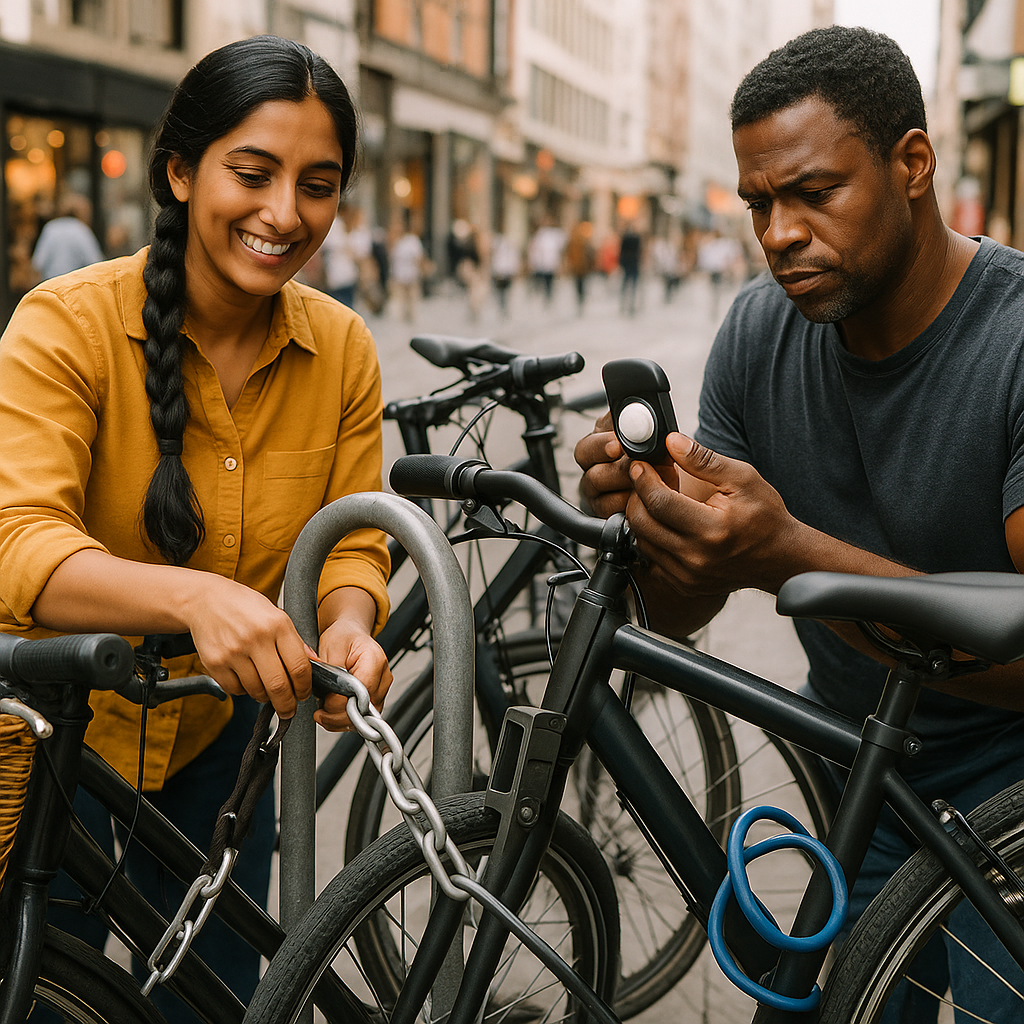
By the end of this guide, you'll understand how to assess your bike's vulnerability, master various locking techniques with different lock types, avoid common security mistakes, and implement specialized strategies for different environments—all while learning how to maximize protection even without a traditional U-lock.
Understanding your bike's theft risk and lock options
Before choosing a locking strategy, it's important to understand what makes your bicycle vulnerable in the first place. Thieves typically assess three key factors when targeting bikes: value, location, and security measures.
Higher-end bicycles naturally attract more attention, but even modest rides aren't safe. Location plays a crucial role—bikes left in high-theft areas, isolated spots, or overnight are particularly vulnerable. However, what ultimately determines whether a thief moves on or attempts theft is your security setup. Professional thieves can recognize inadequate security from a distance and will target even expensive locks if they're used incorrectly.
According to experienced urban cyclists, thieves typically spend less than 90 seconds on a theft attempt. If your security setup requires more time and effort to defeat, they'll likely move on to easier targets. This illustrates why proper technique often matters more than simply investing in expensive equipment.
Types of bike locks (alternatives to U-locks)
While U-locks remain popular, several alternatives offer comparable security when used correctly:
- Chain locks: Highly versatile with greater reach than U-locks. Premium hardened-steel chains (10mm or thicker) provide excellent security, though they're heavier than other options. Perfect for high-risk areas and securing multiple components.
- Folding locks: Offering a balance between security and portability, these accordion-style locks provide more locking options than U-locks while being lighter than chains. Their unique design makes them resistant to many common attacks.
- Cable locks: While not recommended as primary security in high-risk areas, cables work well as secondary locks to secure wheels and accessories when paired with stronger primary locks. They're lightweight and highly flexible.
- Security skewers and bolts: These replace standard quick-release mechanisms on wheels, seats, and components with security-oriented alternatives requiring special tools to remove. They eliminate the need for additional locks on components.
- Frame locks: Popular in European cities, these locks mount permanently to your bike and immobilize the rear wheel. While they won't prevent someone from carrying your bike away, they're convenient for quick stops in lower-risk areas.
For cyclists seeking additional protection beyond traditional locks, discreet tracking options like an Airtag bike mount case with secret security screws provide a smart layer of security that thieves won't immediately notice. These small investments significantly increase your chances of recovery if theft occurs.
Pro techniques for locking your bike on the street
Mastering street locking techniques represents your best defense against opportunistic thieves. The fundamentals remain consistent regardless of lock type, though each security tool requires slightly different approaches.
The primary rule is always to secure your frame and at least one wheel to an immovable object. Whatever lock type you choose, position it to minimize leverage opportunities—thieves rely on leverage to break locks, so filling the internal space of your lock with bicycle components rather than leaving empty space makes their job significantly harder.
Urban commuters consistently report that locking locations matter as much as locking methods. Choose busy areas with proper bike racks whenever possible, avoiding isolated spots, scaffolding, wooden railings, or trees—all of which offer minimal security. For additional street protection beyond physical locks, many cyclists now consult resources on how to outsmart bike thieves – the hidden power of AirTag mounts for cyclists provides valuable insights on combining traditional and technological security.
Five secure locking methods (with and without U-locks)
Let's explore five proven locking strategies that work with various lock types:
1. The Modified Sheldon Method
This technique secures the rear wheel and frame using a single lock:
- Position your bike next to an immovable object
- Place your lock (chain, folding, or U-lock) around the rear wheel, passing through the rear triangle of the frame
- Connect to the immovable object
- This secures both the frame and rear wheel with one lock
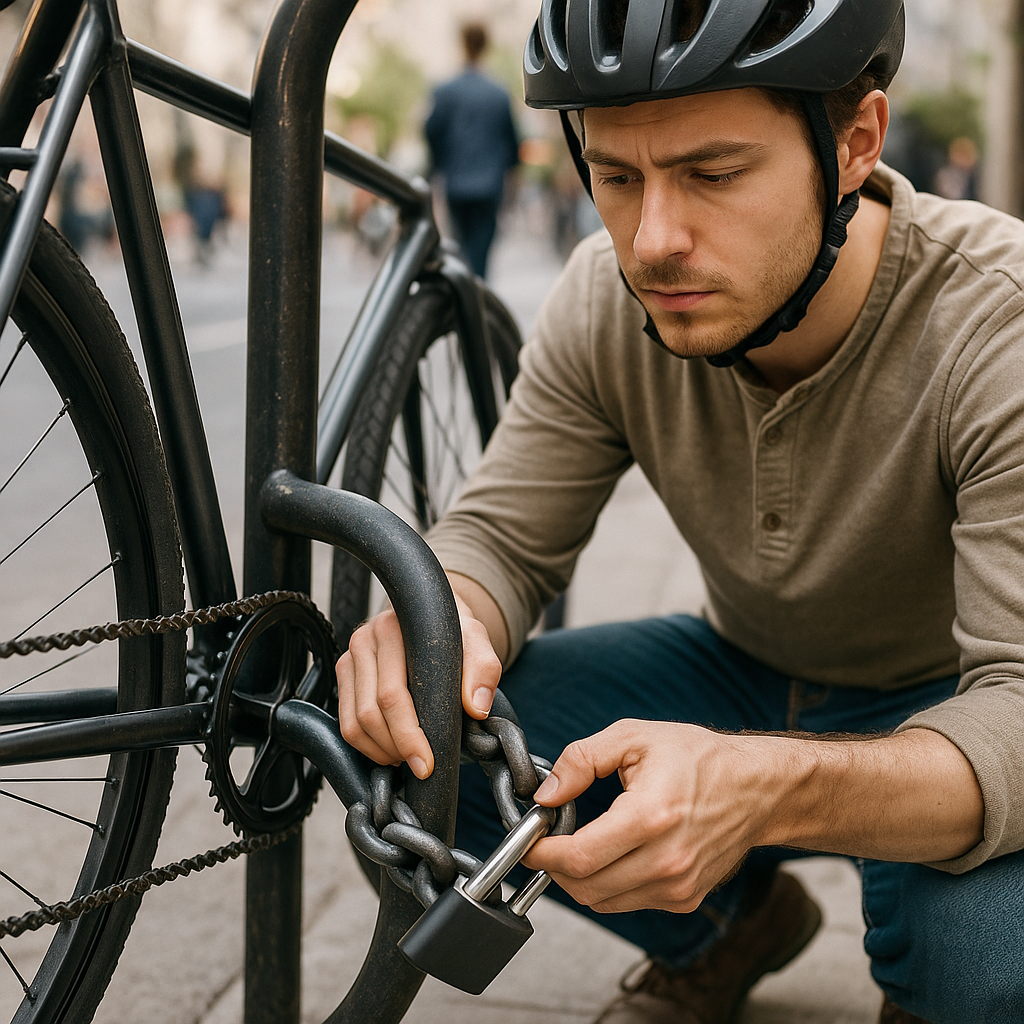
Pros: Efficient use of a single lock; protects valuable components
Cons: Leaves front wheel vulnerable; requires secondary security for complete protection
2. The Chain Wrap Technique
Perfect for those using chain locks instead of U-locks:
- Thread the chain through both wheels and the frame
- Wrap the chain tightly to minimize slack (slack provides leverage for thieves)
- Position the lock mechanism in a hard-to-reach location
- Secure to an immovable object
Pros: Comprehensive protection with a single lock; highly adaptable to different securing points
Cons: Requires a longer, heavier chain; takes more time to deploy
3. The Cable Extension Method
Using a strong primary lock with a cable for additional security:
- Secure your frame to an immovable object using your strongest lock
- Thread a cable through both wheels
- Loop the cable back and secure it with your primary lock
Pros: Comprehensive protection; cable adds minimal weight
Cons: Cables can be easily cut; relies on the strength of the primary lock
4. The Two-Lock Strategy
Using different lock types for maximum security:
- Use your first lock (folding or chain) to secure the frame and rear wheel to an object
- Use your second lock (even a lightweight one) to secure the front wheel to the frame
Pros: Requires two different tools to defeat; greatly increases theft time
Cons: Heavier to carry; takes longer to lock/unlock
5. The Component Security Approach
For cyclists without traditional locks:
- Replace quick-release skewers with security skewers on wheels
- Install a security seatpost clamp
- Use a smaller, lighter lock (even a lightweight chain) to secure just the frame
Pros: Lightweight; eliminates need for multiple heavy locks
Cons: Requires initial investment in components; special tools needed for wheel removal
Avoiding common mistakes and sabotages
Even the most expensive lock becomes useless when used incorrectly. Avoid these frequent errors that make thieves' work easier:
- Locking only the wheel: One of the most common mistakes allows thieves to simply detach the wheel and take the rest of the bike. Always include the frame in your locking strategy.
- Creating leverage opportunities: Locks positioned with excessive space or against the ground provide leverage points for tools. Keep locks tight and elevated.
- Ignoring the securing object: Thieves sometimes cut through or dismantle racks, signs, or fencing rather than attacking the lock. Verify that your anchor point is solid and truly immovable.
- Predictable routines: Locking in the same location at the same times creates patterns that professional thieves notice. Vary your parking spots when possible.
- Lock facing down: Positioning lock mechanisms toward the ground makes them more accessible to thieves. Face keyholes upward to increase difficulty.
- Assuming daytime safety: Many cyclists are less careful during daylight hours, but experienced thieves work just as efficiently in daylight—often appearing as "maintenance workers" to avoid suspicion.
Modern thieves also employ sophisticated sabotage techniques, including partially cutting through locks and covering the damage with stickers or tape, hoping you'll lock your bike with the compromised lock again. Always inspect your locks before using them, especially if they've been left unattended.
Locking your bike at home, work, and in shared spaces
Contrary to common belief, a significant percentage of bike thefts occur at home or work rather than on the street. These environments present unique challenges requiring specialized approaches to security.
At home, never assume your bike is safe simply because it's indoors.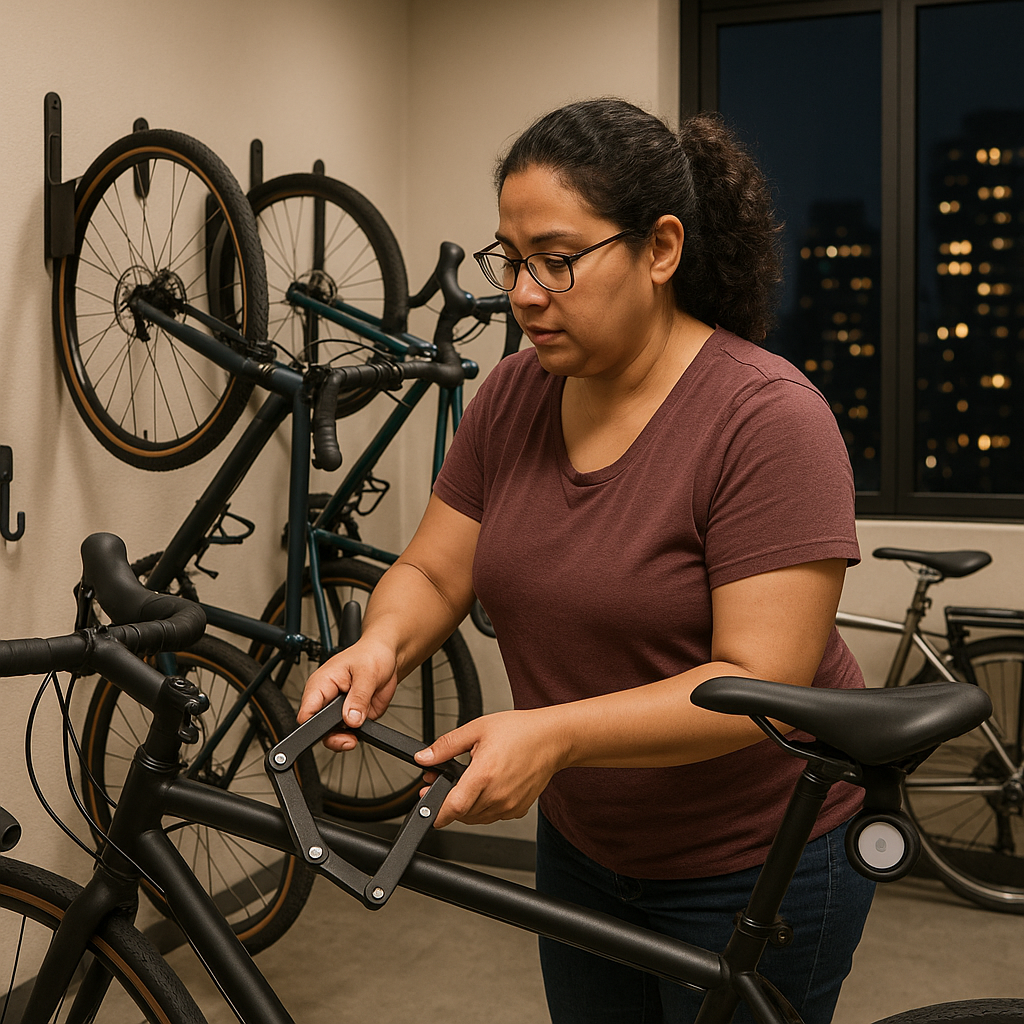
Garages, sheds, and shared building storage areas are prime targets for thieves who often have more time and privacy to work. For apartments and rental properties where permanent solutions aren't possible, portable anchors, heavy furniture securing, and indoor storage solutions become essential.
Workplace security presents similar challenges. Office bike rooms and parking areas experience theft when security becomes lax or predictable. The best approach combines physical security with vigilance, including regularly changing locking patterns and using visual deterrents.
For renters or those in temporary living situations, dedicated bike storage furniture with integrated locking points provides security without permanent modifications. Alternatively, a bike saddle mount for Airtag concealed under your seat offers recovery options without alerting thieves to its presence—particularly valuable in shared housing where you can't control who enters the storage areas.
Securing components and accessories (beyond the frame)
Comprehensive security extends beyond the frame to protect valuable components. Modern bikes often feature expensive parts that are targeted separately from the bike itself.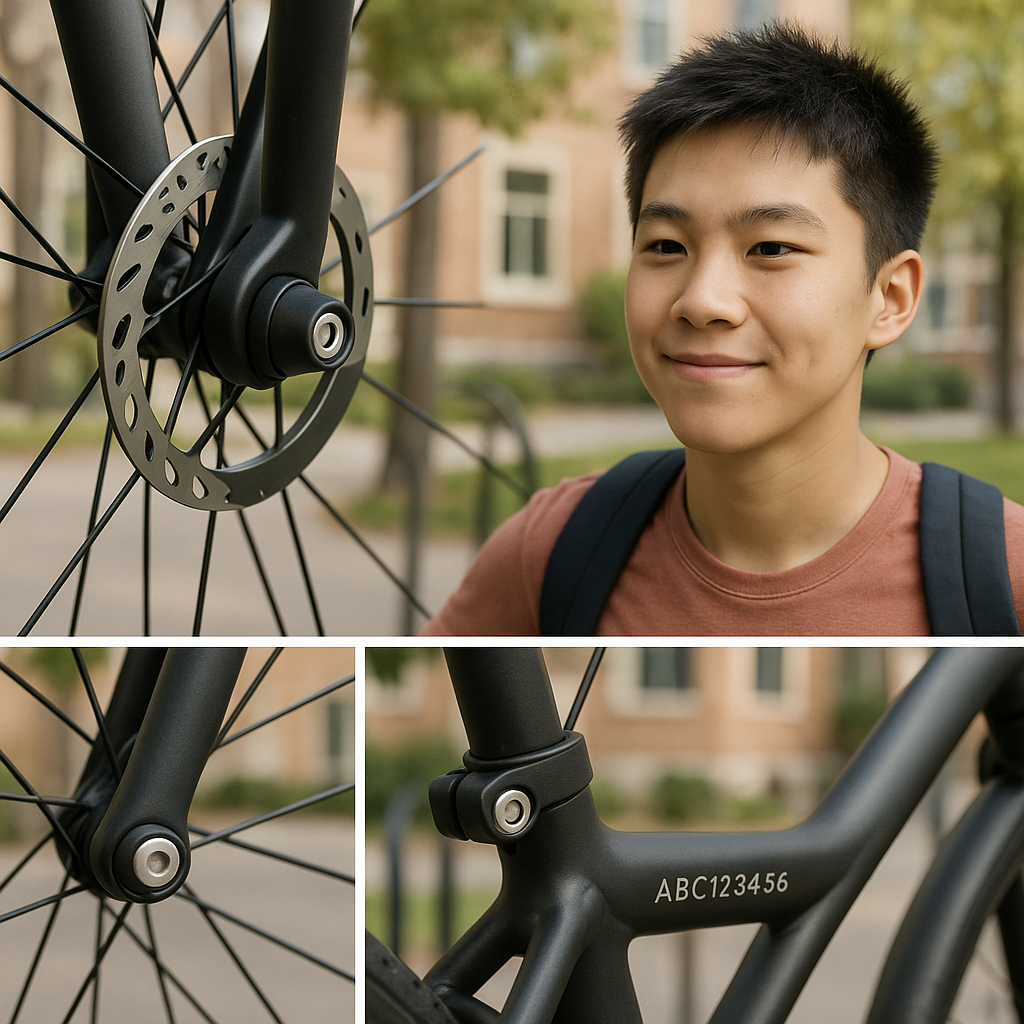
Protect these components with:
- Security skewers: Replace standard quick-release skewers on wheels and seats with security versions requiring specialized tools for removal.
- Locking seatpost clamps: These prevent seat and seatpost theft using keyed mechanisms instead of standard hex bolts.
- Security bolts: Replace standard hex bolts on stems, handlebars, and other components with security alternatives requiring special tools.
- Secondary cables: Thread thin cables through expensive components and secure them to your main lock.
- Removable components: Take expensive lights, computers, and bags with you rather than leaving them on the bike.
For particularly valuable accessories, engraving your contact information or using tamper-evident security marking provides additional deterrence and increases recovery chances if theft occurs.
Next-level security: smart tech and additional protection
The integration of traditional physical security with modern technology represents the future of bicycle protection. Smart options don't replace good locks and techniques but significantly enhance overall security.
GPS trackers designed specifically for bicycles provide real-time location data and movement alerts, allowing quick response to theft attempts. While visible trackers might deter opportunistic thieves, concealed options increase recovery chances by allowing tracking without alerting the thief.
Component marking and registration services create permanent, difficult-to-remove identification on bicycle parts. These markings, often microscopic or DNA-based, connect components to their rightful owners and make resale difficult for thieves.
Insurance specifically designed for cyclists provides financial protection when physical security fails. Most policies require using approved locks and following security best practices, so documenting your security setup with photos becomes important for potential claims.
For cyclists seeking the most comprehensive protection, an airtag bike mount case with secret security screws represents an excellent investment. These discreet devices allow real-time tracking while remaining hidden from thieves, providing both prevention and recovery options beyond what traditional locks alone can offer.
Combining these technologies with proper locking technique creates a multi-layered approach to security that addresses both prevention and recovery—giving you the best chance of maintaining possession of your bicycle even in high-risk environments.
Conclusion
Mastering bicycle security doesn't require expensive equipment—it demands knowledge and consistency. By understanding risk factors, employing proper locking techniques, and avoiding common mistakes, you can dramatically reduce theft risk even without premium U-locks.
The most effective security approaches combine multiple strategies: proper locking technique, component security, environmental awareness, and increasingly, smart technology integration. Remember that thieves look for easy targets, so making your bicycle require more time, specialized tools, or additional risk significantly increases the likelihood they'll move on to easier options.
Whether you choose chains, folding locks, security components, or high-tech solutions, consistently applying the principles covered in this guide will help ensure your bicycle remains exactly where you left it—properly secured and waiting for your return.
Frequently asked questions
Can I lock my bike safely without a U-lock?
Yes, with smart technique and strong alternatives like chains, security skewers, or folding locks, you can deter thieves—even in urban areas.
What's the most common mistake people make when locking their bikes?
Failing to secure the frame (not just a wheel), poor lock placement, or choosing a weak object to lock to.
How can I protect removable parts (wheels, seat) from theft?
Use security skewers, bolts, cables, or take components with you; newer tech like concealed trackers also helps recover stolen parts.
Where is the safest place to lock my bike?
In public, choose busy, visible locations with sturdy racks; at home, use fixed anchors or secure mounts inside buildings.
Does bike insurance cover theft outside the home?
Most policies cover bikes if properly locked with a certified lock—always check your insurer's terms and document your setup.
